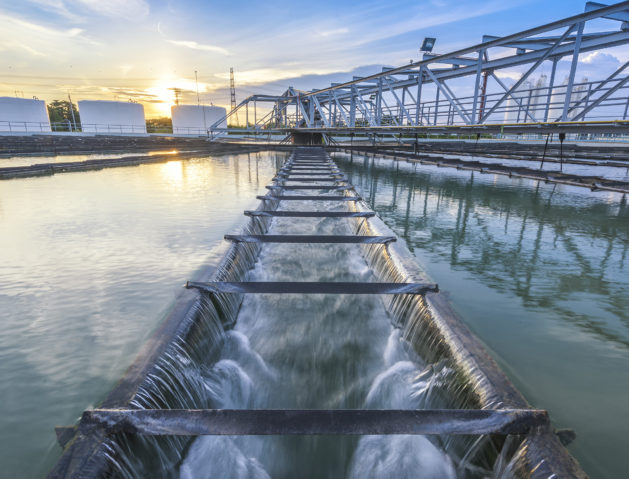Water resources of China
Water resources of China
The water resources of China are affected by both severe water shortages and severe growing population and rapid economic development as well as lax environmental oversight have increased in a large scale the water demand and pollution. China has responded by measures such as rapidly building out the water infrastructure and increasing regulation as well as exploring a number of further technological solutions.
Due to continual economic growth and population size, China is one of the world’s leading water consumers. China withdraws roughly 600 billion cubic meters of water on a yearly basis. The country surpasses the United States by 120 billion cubic meters and falls short of India by 160 billion cubic meters.
For this reason, China’s domestic policy remains one of the most vital on a national and international scale.
Issues relating to water quality and quantity are likely primary limiting factors in China’s sustainable economic and infrastructural development.
Water quantity
China's fresh water resources include 2500 cubic kilometers of mean annual run-off in its rivers and 828.8 cubic kilometers of groundwater recharge. As pumping water draws water from nearby rivers, the total available resource is less than the sum of surface and groundwater, and this is only 2,821.4 cubic kilometers. 80% of these resources are in the South of China.
In 2016, 82% of China's total water supply was surface water, but only 18% was groundwater. The northern part of China depends more on groundwater than the southern part because of less precipitation.
Progress has been made over the last three decades in providing its citizens with improved drinking water. According to the UN, almost a quarter of the world’s progress in this regard occurred in China, with 457 million citizens seeing enhanced water availability and quality from 1990 to 2010. The UN attribute this progress to increased water pipe systems, highlighting the importance of domestic policy.
Perhaps one of the more well-known initiatives of the Chinese government for the purposes of water sustainability is the South-to-North Water Diversion Project.
The project is one of the largest of its kind and intends to reroute water from the less populated, high water availability areas in Southern China to the population centers with water supply issues of Northern China. The project should help to alleviate water shortages for citizens in these areas in the process of sustaining water consumption in sectors that use large sums of water, such as industry and agriculture.
Water balance
A farmer's cabbage patch being watered in Linxia County, Gansu
Over-extraction of groundwater and falling water tables are big problems in China, particularly in the north. According to the Ministry of Construction, preliminary statistics show that there are more than 160 areas nationwide where groundwater has been over-exploited with an average annual groundwater depletion of more than 10 billion cubic meters. As a result, more than 60,000 square kilometers of ground surface have sunk with more than 50 cities suffering from serious land subsidence. Flooding is also still a major problem.
In a Xinhua article from 2002, Chinese experts warned of future or current water shortages. Water resource usage was expected to peak in 2030 when the population peaks.
Areas north of the Yangtze River were particularly affected with 80.9% of Chinese water resources being south of the river. Northern China had used 10,000-year-old aquifers which had resulted in ground cracking and subsidence in some regions.
A 2005 article in China Daily stated that out of 514 rivers surveyed in 2000, 60 were dry. Water volume in lakes had decreased by 14%. Many wetlands had decreased in size.
Jared Diamond stated in his 2005 book Collapse that, in the past 50 years, exploitation in the form of dams and other irrigation infrastructure have all but halted the Yellow River's natural course, threatening to dry up the entire river valley. The cessation of river flows, or flow stoppages, has surged since the 1980s because of Increased water usage and waste. In 1997, the lower Yellow River did not flow 230 days out of the year, an increase of over 2000% since 1988. Increased erosion and sedimentation, especially on the Loess Plateau, has made the river much less navigable by ship.
For the 2008 Summer Olympics, China diverted water from Hebei and Shanxi provinces, areas already beset by drought and dramatic water shortages, to Beijing.
In July 2008, the head of the Beijing Water Authority Bi Xiaogang denied that the Olympics would increase water consumption by a large amount. However, previously he and other local officials said that Beijing would divert up to 400 million cubic meters of water from Hebei for the Games with water-diversion facilities and pipes being built to pump water from four reservoirs in Hebei. Around Baoding city alone, a mostly rural area, 31,000 residents lost land and their homes due to a water transfer project; many more have been displaced throughout Hebei.
According to an August 24, 2008 report by the UK's Times, much of the infrastructure intended for the water diversion scheme was left half-constructed or unused when Beijing officials realized that water demand estimates had been far too high. The number of tourists attending the Beijing games was lower than expected, and many migrant workers, ethnic minorities, and political dissidents had left the city as a result of intimidation or official requests. Nevertheless, the Hebei area had already been sucked dry to fill a number of large reservoirs, leading to drought and agricultural losses.
Water quality
The quality of groundwater or surface water is a major problem in China, be it because of man-made water pollution or natural contamination.
China's extraordinary economic growth, industrialization, and urbanization, coupled with inadequate investment in basic water supply and treatment infrastructure, has resulted in widespread water pollution.
https://en.wikipedia.org/wiki/Water_resources_of_China


